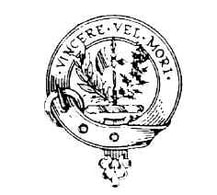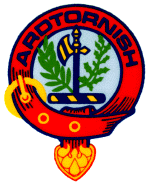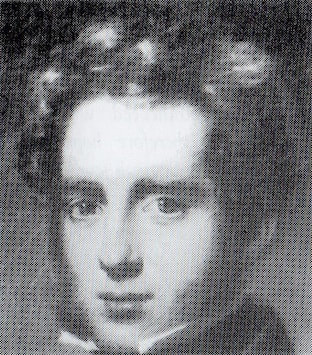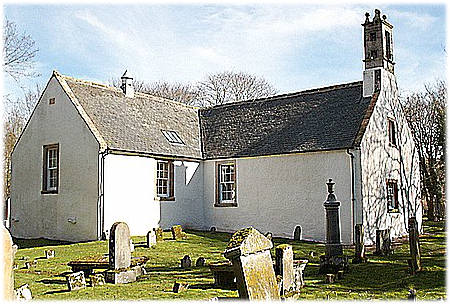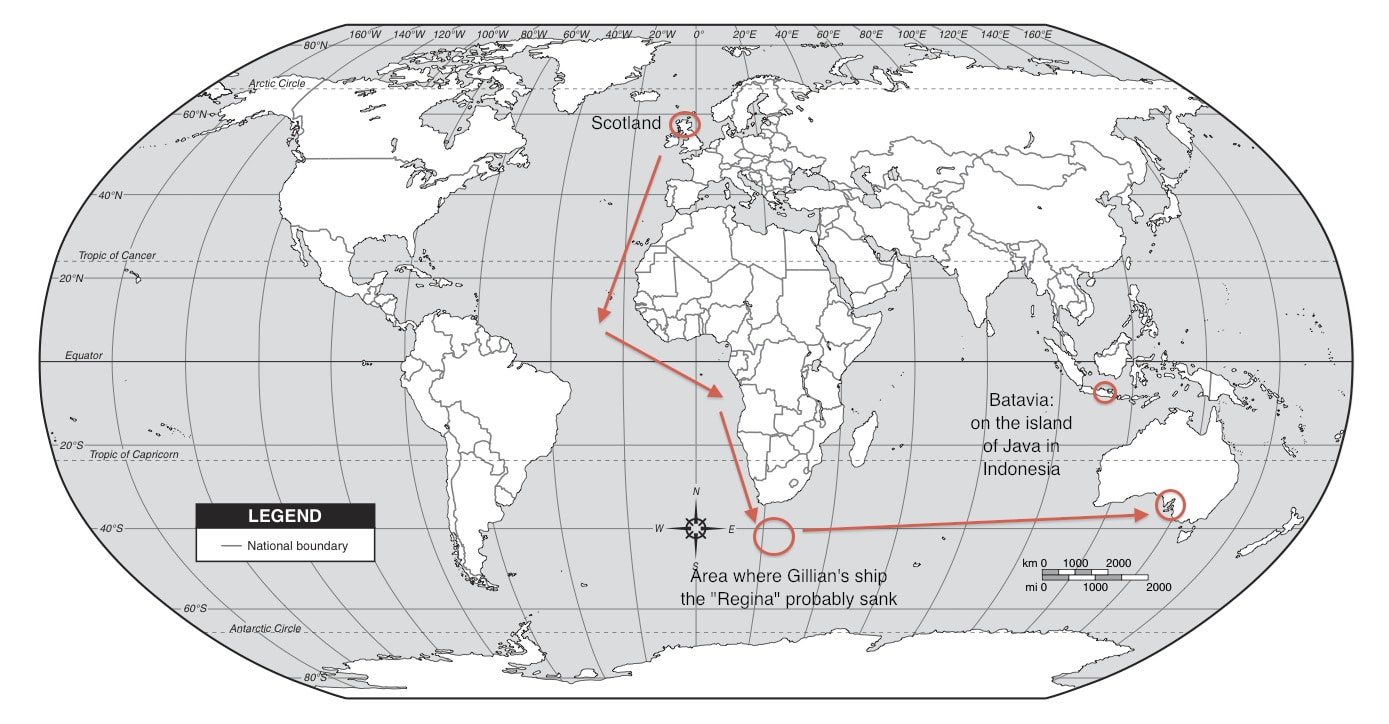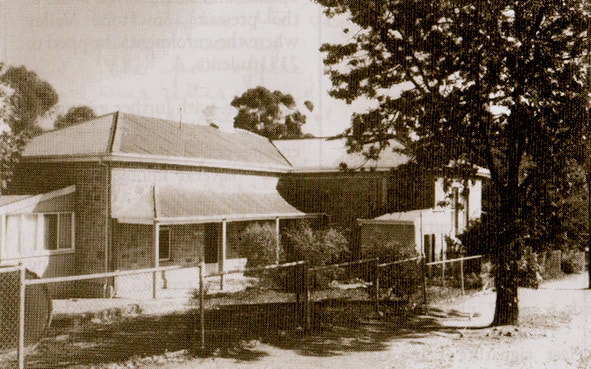The History of Ardtornish - for Younger Readers
This is the story of how our school came to be called Ardtornish Primary.
|
In 1461, hundreds of years before white people ever came to South Australia, a castle was built in Scotland.
In Scotland, families groups were called clans. Everyone knew what clan they were in and the clans would sometimes fight each other. A group of people called the Donald Clan wanted to build a castle to live in. It had to protect them from being attacked so they thought very carefully about where to build it. They decided to build it in a place that would be hard to attack, so they chose to put it on top of a hill, on a narrow bit of land sticking out into the water. They wanted to give the castle a name so they thought "Let's use three scottish words to describe it." The words they chose were:
So Ardtornish means "(ARD) Up high, (TOR) on a hill, (NISH) on some land sticking out into the water" or "High up a hill on a cape." This name perfectly describes where the castle was. In Scotland lots of castles were built in these sorts of places because when soldiers tried attack them they could only come from one direction and so it made it easier for the people in the castle to defend themselves. |
|
The Artornish castle was where the high Chiefs of Clan Donald lived.
They were there for a long time until other Scottish people heard that they had made a deal with the English King, Edward the IV, to let him take over Scotland. The Scottish people were so angry, that for a punishment, they made the Donald clan leave Ardtornish castle and then they also took away all their lands so they could no longer live there. The castle was empty for a while but then it was given to another clan called the MacLaines. They came from a place called Lochbuie so they were called the "Lochbuie MacLaines". All clans have a family "Coat of Arms." A coat of arms is a picture that is used to show who they are. They needed this in the olden days because most people could not read. The Lochbuie MacLaines' coat of arms has a drawing of a battleaxe with two tree branches next to it. |
The Lochbuie MacLaines' Coat of Arms displays a battleaxe with two branches, one a laurel, the other a cypress.
|
The Lochbuie MacLaines' Coat of Arms is now the logo for Ardtornish Primary School and it links us to the school's Scottish heritage. |
One branch, is from a laurel tree and means VICTORY and the other is from a cypress tree and means
"DEATH and everlasting life."
Their family motto was written in Latin and says "Victory or Death." They were tough fighters.
"DEATH and everlasting life."
Their family motto was written in Latin and says "Victory or Death." They were tough fighters.
The MacLaine Family
The story of how our school got its name starts in 1772 when Allan MacLaine was born.
When Allan grew up the Ardtornish Castle was so old it was falling down and so no-one lived in it anymore.
Allan had two sons one called Gillian and another one called Angus.
Angus was very religious and wanted to become a Minister and work in a church.
Gillian wanted to be a merchant and buy and sell things.
Student Days
|
In 1819, Angus MacLaine went to a big city in Scotland called Glasgow to learn more about religion so he could become a Minister and work in a church.
He was a good person but he was not sure if he was good enough to be a Minister. He wasn't sure that he could do the job properly even though everyone, who knew him, thought he was kind and would make a good Minister. For three years he studied very hard. He liked to learn new things so he did extra subjects to learn about as many things as he could. His Uncle, John Gregorson, was so worried about how hard Angus was working that he wrote him a letter saying. "My Dear Angus, It is impossible to learn everything so you should just try to learn about the things you need to be a Minister and work in the church. Angus became a Minister in 1823. |
Gillian MacLaine
|
On Saturday 3rd March 1832 Gillian (Angus's brother) sailed away from Sotland on his way to a city called Batavia, on the island of Java, in Indonesia. He did this because he thought he could make lots of money working there. Indonesia at this time was called "The Dutch East Indies," because the Dutch people controlled these islands and so it was one of their colonies.
On board, he met a Dutch woman, Catherine van Beurschem. They became friends and later they got married. He was very successful in business, and he made lots of money buying and selling things. He would buy things and send them to other countries to sell for lots of money. He was a very successful merchant. He lived in a city called Batavia (now called Jakarta - the capital city of Indonesia). He owned some sailing ships which took the goods he was selling to London, Singapore and Sydney. |
While he was living in Batavia, Gillian heard that lots of people from England and Scotland were going to Australia and that they really liked living there. People were building new cities and towns and starting farms and businesses.
Gillian thought it would be good to buy a farm in Australia. He had a friend called Mr London who also wanted to buy a farm so they decided to buy one together. Gillian sent Mr London to Adelaide to see what it was like.
Mr London liked Adelaide and thought they should buy some land to start a sheep farm. He and Gillian both had £2000 each so they put their money together and bought a lot of land for £4000. They got 1000 acres.
The government of South Australia said that if Gillian and Mr London bought a lot of land they could also bring some other people with them to help them to do the farm work.
Gillian and Angus were friendly brothers and so they sent letters to each other all the time. Angus told Gillian that he was not very well and was getting sick all the time.
Gillian told Angus in December 1838 that he had bought land near Adelaide to start a farm and he asked him to come to Adelaide and be the boss of the farm.
Gillian thought it would be good to buy a farm in Australia. He had a friend called Mr London who also wanted to buy a farm so they decided to buy one together. Gillian sent Mr London to Adelaide to see what it was like.
Mr London liked Adelaide and thought they should buy some land to start a sheep farm. He and Gillian both had £2000 each so they put their money together and bought a lot of land for £4000. They got 1000 acres.
The government of South Australia said that if Gillian and Mr London bought a lot of land they could also bring some other people with them to help them to do the farm work.
Gillian and Angus were friendly brothers and so they sent letters to each other all the time. Angus told Gillian that he was not very well and was getting sick all the time.
Gillian told Angus in December 1838 that he had bought land near Adelaide to start a farm and he asked him to come to Adelaide and be the boss of the farm.
|
"My Dear Angus", he wrote, "If you come to Adelaide I will give you five thousand pounds to buy sheep and start a farm. You can also bring forty people from Scotland to help you.
The idea of lving in sunny Adelaide, made Angus very happy because he thought that he would feel a lot better and not get sick all the time like he did in Scotland, which was always cold, damp and wet. Gillian got a ship ready to take sheep, chickens, cows and pigs to his new farm. He felt sure that Angus would want to go to Australia and be the boss of the farm. Gillian was talking so much about travelling that he started to get homesick. He had been away from Scotland for seven years. His wife Catherine, was from Holland and she had never visited Scotland so she wanted to go there as well. So Gillian and Catherine and some of her relatives decided Gillian owned. The ship was called the "Regina" and she was very expensive to build because Gillian wanted her to be fast, and comfortable, and strong, and able to carry lots of cargo. |
Angus quits his job as a Minister
|
Angus was still in Scotland but he was not happy. The work in the church was very hard as he had to go and visit lots of people all over the countryside and he was getting sick all the time.
He told his Uncle Gregorson he was thinking of going to Australia to work on a sheep farm. His Uncle said that he should not go as he would miss seeing his brother Gillian who was coming back to Scotland for a holiday. Angus knew his brother Gillian would not care if he did not see him because it was Gillian's idea for Angus to go to Australia and work on his sheep farm. |
|
Angus decided to quit his job as a Minister straight away, and some people were cross about it, but he told them he had to do it, so he could get better. He did not want to be sick all the time.
In March 1840, Angus left Scotland on a ship called the "Dauntless." At the same time his brother Gillian left Java to returning to Scotland on board the Regina, with his family and friends. Angus's ship, "The Dauntless" sailed to Adelaide and arrived on 10th July 1840. It took four months to get to Adelaide.The ship dropped its anchor at Glenelg. There was no jetty at Glenelg because people had only been in Adelaide a little while and had not yet built one so the passengers had to row to shore in little boats. When the water got very shallow water, the men had to wade to the shore while the sailors carried the women so they would not get wet. |
The Regina is lost at sea
|
Angus got safely to Adelaide but his brother Gillian did not get safely back to Scotland.
Gillian's family in Scotland waited for his ship to arrive but it never came. After many months of waiting people knew that Angus's ship "The Regina" must have sunk. The Regina was a very good ship but she must have been smashed up in a storm or hurricane in the Cape of Good Hope. The Cape of Good Hope is a part of the sea, near the bottom part of Africa. By October 1840, everyone was sure that Gillian was dead and so his business partner wrote a letter to Angus telling him that Gillian's ship had sunk and asking him to come back to Scotland to decide what to do with Gillian's money and house and other things. |
This map shows the way Angus's ship came to Australia. The big circle shows where the "Cape of Good Hope" is.
It took a long time to get letters in the olden days and by the time Angus found out his brother was dead, he had already set up "camp" ( in an area near where the Tea Tree Plaza shops are today) and put a fence around 80 acres for his sheep.
|
Angus had to live in a tent because there were no houses. His servants and the workers who had come with him from Scotland had to live in tents as well.
They put their tents near a spring so they could get water. The tents looked like a small Scottish village. There were cows, calves, chickens and pigs which they could look after and eat for food Angus later bought 750 ewes (girl sheep) so they could have lambs and make his flock of sheep get bigger. Settlers from England were also living near Angus and he would pay them to work for him. They would look after his crops, of fruit and vegetables. Although it was hot in Adelaide, things grew better than they did back in Scotland where it was so cold. |
After a while Angus had some people build him a proper house, out of stones, so he did not have to stay in a tent anymore. He called his house, "Ardtornish House" to remind him of where he came from in Scotland.
After a while people called the whole area around the farm and the house Ardtornish. The area was called Ardtornish for many years until its name was changed to Modbury.
The original Ardtornish House is still standing today and is located on Kelly Road.
In November 1841, Angus received the first of the letters telling him of his brother's death. He was very upset and sad and made immediate plans to sail to Batavia to help decide what to do with all of Gillian's businesses. In his will, Gillian left all his money and things to Angus. Angus was now quite rich. The farm now had cows and milking sheds, two houses, stockyards, cowsheds and pigsties.
In 1843, Angus returned to Scotland to see his family and he stayed there for three years then he returned to the homestead on his farm in Adelaide.
After a while people called the whole area around the farm and the house Ardtornish. The area was called Ardtornish for many years until its name was changed to Modbury.
The original Ardtornish House is still standing today and is located on Kelly Road.
In November 1841, Angus received the first of the letters telling him of his brother's death. He was very upset and sad and made immediate plans to sail to Batavia to help decide what to do with all of Gillian's businesses. In his will, Gillian left all his money and things to Angus. Angus was now quite rich. The farm now had cows and milking sheds, two houses, stockyards, cowsheds and pigsties.
In 1843, Angus returned to Scotland to see his family and he stayed there for three years then he returned to the homestead on his farm in Adelaide.
Ardtornish School
When Angus got back to Adelaide he decided he should help build a school for all the children whose parents worked on his farm. Because everyone was calling the area around the farm 'Ardtornish' they decided to call the school, "Ardtornish School."
Angus asked the government to help by paying for some of the work and by the end of 1847 the first Ardtornish School was built on three acres of land he had given them. The school was run by the 'Church of Scotland' because Angas did not know how to run a school.
Angus asked the government to help by paying for some of the work and by the end of 1847 the first Ardtornish School was built on three acres of land he had given them. The school was run by the 'Church of Scotland' because Angas did not know how to run a school.
When the school started it wasn't very good. The first teacher was Mr. Orr. He was the Principal from 1847 until the end of 1848.
The school didn't do very well until Mr. F. Talloch, a hard working teacher arrived from England.
Everyone liked him and thought he was good but, Mr. Talloch became homesick and after 3 months he returned to England in the May of 1849.
The next teacher was Robert McTaggart, another Scot, who was there from 1849-50. He was followed by Mr. McKellar for eight months in 1851.
The teachers did not want to stay very long at the school because they were not paid very much money.
In February 1851, gold was found at a town called Bathurst, in New South Wales, and thousands of people from all around Australia went there to dig for gold and to try and get rich. People all over Australia left their jobs and went to try their luck finding gold. So many people went to the goldfield that were not enough people doing other work such as farming, building, baking and teaching.
The school didn't do very well until Mr. F. Talloch, a hard working teacher arrived from England.
Everyone liked him and thought he was good but, Mr. Talloch became homesick and after 3 months he returned to England in the May of 1849.
The next teacher was Robert McTaggart, another Scot, who was there from 1849-50. He was followed by Mr. McKellar for eight months in 1851.
The teachers did not want to stay very long at the school because they were not paid very much money.
In February 1851, gold was found at a town called Bathurst, in New South Wales, and thousands of people from all around Australia went there to dig for gold and to try and get rich. People all over Australia left their jobs and went to try their luck finding gold. So many people went to the goldfield that were not enough people doing other work such as farming, building, baking and teaching.
Augustus Winter was the next schoolmaster and he remained until 1857.
In 1853 some thirty students went to the school, although a lot of the children would not go every day and would miss school. They often had to help there mums and dads do work at home or on the farm.
On January 19th 1857, Mr. Charles Kerr started to teach at the school. He was popular with the students and parents and everyone said he was the best teacher they ever had at the school.
He was so good at teaching the children that the Ardtornish School was soon the best school in the whole district.
For the next 20 years eveyone said Ardtornish was the best school to go to.
Students in the school learnt a lot about Scotland because most of the teachers came from Scotland and it was run by the 'Church of Scotland.'
In 1849, a new school was opened a few kilometres away. It was called Hope Valley School.
Lots of new settlers were still coming to South Australia and a whole lot came from Germany. They settled in Hope Valley and sent their children to the new school. So soon there were two schools - Ardtornish where children learnt a lot about Scotland and Hope Valley School where children learnt a lot about Germany,
The two schools were friendly with each other and both kept going for the next eight years.
In 1875, Angus sold his farm and the new owners decided to close the Ardtornish School.
The farm was now owned by the Hart brothers and they changed the school building into a woolshed. They used the woolshed to shear the sheep in.
There was also trouble with the Hope Valley School which had started to fall down because the German people did not have enough money to fix it up.
The school became so dangerous that they had to close it. So now there were no schools for the children to go to.
Angus MacLaine was now a rich old man. He was about 80 years old and he had a lot of money so he decided to help build another school.
In 1853 some thirty students went to the school, although a lot of the children would not go every day and would miss school. They often had to help there mums and dads do work at home or on the farm.
On January 19th 1857, Mr. Charles Kerr started to teach at the school. He was popular with the students and parents and everyone said he was the best teacher they ever had at the school.
He was so good at teaching the children that the Ardtornish School was soon the best school in the whole district.
For the next 20 years eveyone said Ardtornish was the best school to go to.
Students in the school learnt a lot about Scotland because most of the teachers came from Scotland and it was run by the 'Church of Scotland.'
In 1849, a new school was opened a few kilometres away. It was called Hope Valley School.
Lots of new settlers were still coming to South Australia and a whole lot came from Germany. They settled in Hope Valley and sent their children to the new school. So soon there were two schools - Ardtornish where children learnt a lot about Scotland and Hope Valley School where children learnt a lot about Germany,
The two schools were friendly with each other and both kept going for the next eight years.
In 1875, Angus sold his farm and the new owners decided to close the Ardtornish School.
The farm was now owned by the Hart brothers and they changed the school building into a woolshed. They used the woolshed to shear the sheep in.
There was also trouble with the Hope Valley School which had started to fall down because the German people did not have enough money to fix it up.
The school became so dangerous that they had to close it. So now there were no schools for the children to go to.
Angus MacLaine was now a rich old man. He was about 80 years old and he had a lot of money so he decided to help build another school.
|
Angus MacLaine gave a donation of £100 and some land to the people who wanted to build a new school but he said,
"If I give you the money and land you must promise to call the new school Ardtornish." Everyone agreed to do this so a new Ardtornish school (pictured opposite ) was built further along Grand Junction Road (opposite Tolley Road next to the croquet club) and it officially opened on the 5th December 1881. The stone school building had a five-roomed teacher's house with an attached two classroom school. In the old days many schools only had one or two teachers and so a house was built for the head teacher on the school grounds. The teacher had to look after the school building. |
Ardtornish School changes its name to Hope Valley School
|
The school was called Ardtornish until 1915, and then its name was changed to Hope Valley Primary School.
This was because the school principal Mr. William Bennett’s sent a letter on 16th December 1914 to the Education Department asking them to change the name. He wanted to change the school's name because the Ardtornish farm was gone and no-one called the area Ardtornish any more, they called it Hope Valley. When people tried to send letters to Ardtornish School the Postmen did not know where it was and all the other businesses around it were called Hope Valley. Like the Hope Valley Bank and the Hope Valley Shops and the Hope Valley Church. In November 1921, a parent of one of the older boys in the school said the Principal, Mr. Dingle was making the older boys chop wood and clean out his horse stable, while the girls had to sweep out and clean his house. He was also said to be leaving the school for "hours at a time" and making his helpers teach the students Mr. Dingle said he only made some boys chop wood, and not the other things, but he got into lots of trouble for doing this. In 1925 they started to teach woodwork at the school and then in 1936 they also started to teach children how to grow plants. In 1938 they started to teach the girls how to do house work like ironing and washing and cooking. |
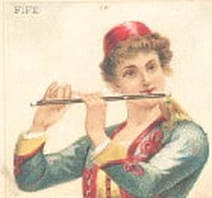
The Grade 6 and 7 children signed the Temperance Pledge Book, which meant they promised not to drink beer and wine when they grew up.
The last time they did this was in 1938 when 171children signed the book.
In 1929 the school won 2nd prize at the Royal Adelaide Show for its vegetable collection.
During these years, a school band was started. Boys played the drums and the girls played fifes (pipes).
The last time they did this was in 1938 when 171children signed the book.
In 1929 the school won 2nd prize at the Royal Adelaide Show for its vegetable collection.
During these years, a school band was started. Boys played the drums and the girls played fifes (pipes).

By the early 1960s, a lot of people moved to the North Eastern suburbs and many new houses were built.
More and more children started to come to the 'Hope Valley School' and the school grew from 60 students in 1960 to 464 in December 1971.
More schools were needed in the area and so in February 1972, the new Highbury Primary School was opened.
The number of students at Hope Valley Primary dropped to 235 students as some children changed schools.
However, the area, was still growing and because the Hope Valley Primary school was so old they decided to build a new one between Saarinen Avenue and Smart Road in St. Agnes.
Some people who liked history knew about Angus MacLaine and the work he had done to build the very first school in our area so while the new school was being built they asked if the school could be named Ardtornish just like that first school so long ago.
The Education Department thought that was a good idea and so today our school is called Ardtornish.
And so now you know how our school got its unusual name.
More and more children started to come to the 'Hope Valley School' and the school grew from 60 students in 1960 to 464 in December 1971.
More schools were needed in the area and so in February 1972, the new Highbury Primary School was opened.
The number of students at Hope Valley Primary dropped to 235 students as some children changed schools.
However, the area, was still growing and because the Hope Valley Primary school was so old they decided to build a new one between Saarinen Avenue and Smart Road in St. Agnes.
Some people who liked history knew about Angus MacLaine and the work he had done to build the very first school in our area so while the new school was being built they asked if the school could be named Ardtornish just like that first school so long ago.
The Education Department thought that was a good idea and so today our school is called Ardtornish.
And so now you know how our school got its unusual name.
Sport Team Houses
From 1980 -1985 the four House names of Ardtornish Primary School were Para, Warren, Milbrook and Barossa, all taken from famous reservoirs.
These names were retained, until in 1986 the somewhat unimaginative names of Yellow, Red, Blue and Green were installed.
Three years later, the colours were linked to well known local historical figures:
These names were retained, until in 1986 the somewhat unimaginative names of Yellow, Red, Blue and Green were installed.
Three years later, the colours were linked to well known local historical figures:
- Kerr (Red)
Charles Kerr, the enigmatic and popular teacher from 1857 - 1875 who raised the scholastic achievement of the school. - Newman (Yellow)
The Newman family bought a section of land in 1854 named "Waterfall Gully" because of its natural springs. The Newman Nursery was established in 1875 and has run as a family business until the present day. - Angus (Green)
From Angus MacLaine the original pioneer and benefactor of Ardtomish School. - Tolley (Blue)
Douglas Tolley purchased a section of land at Hope Valley in 1891 and began a vineyard as a hobby. The flourishing business was continued after his death by his son Leonard whose own sons Peter, David and Reg all attended the Hope Valley School.
School Principals of Ardtornish 1901 - 2019
|
1. Joseph Mitchell , 01/01/01 till 20/12/11
2. William Bennetts 22/01/12 till 21/12/18 Change of name to HOPE VALLEY Primary 3. Herbert M. Dingle 28/01/19 till 20/12/19 4. Carl H. Nietschke 01/06/20 till 25/06/20 5. J.C. Richardson 01/10/22 till 31/12/22 6. William R. Pattrick 07/06/27 till 03/09/36 7. R. Clifton Pearson 15/09/36 till 31/12/38 8. KA Mugford 01/01/39 till 05/10/48 - 10 yrs 9. Walter H. Moulds 08/10/48 till 08/05/54 10. A.O.Wright 25/05/54 till 08/10/58 11. Peter L McCarthy 08/10/58 till 14/12/61 |
12. G.McKie 06/02/62 till 19/12/63
13. Edwin L. Pearce 04/02/64 till 15/12/67 14. W.R.Daw 01/01/68 till 20/12/71 15. Don L. Young 01/01/72 till 13/12/74 16. G. (Tom) McCulloch 01/01/75 till 31/12/79 The New ARDTORNISH PRIMARY Opens 17. Brian McLauchlan 01/01/80 till 31/12/86 - 7 yrs 18. John Lange 01/01/87 till 07/03/88 - 1 yr 19. Alex Staritski 07/03/88 till 31/12/97 - 10 yrs 20. Glyn O'Brien 01/01/98 till 31/12/ 2004 - 7 yrs 21. Judy Parker 1/5/2005 till 11/10/2009 - 5 yrs 22. Mark Hansen 12/10/2009 till Dec 2020 - 11 yrs |
ARDTORNISH – 20 Year Anniversary – 2000 by Glyn O’Brien Principal

Ardtornish is an excellent place to work both as a staff member and as a student.
In 1998 1 spent my first weeks at Ardtornish walking and talking. The high level of organisation about the place was, and still is, outstanding. Teachers and student leaders filled me in on everything from propagating to pen licences! It was clear to me that I would be able to focus my energy on curriculum development and student learning rather than on behaviour management or trying to get enrolments.
My thanks go to all the staff for their commitment and leadership in so many areas then and now. As a staff we spent time in that year developing a plan for the next three years. We wanted to improve our work with students in literacy, computing and assessment and reporting. Environmental Education was also to continue to be a high priority. We have worked with the plan, added extra parts to it and looked further than this special year of 2000. So it was full steam ahead with all the priorities but also with maintaining all the other great programmes at Ardtornish.
We have a complex timetable. To change any activity usually has a domino effect where other areas need to be changed too. Sometimes this can be irritating but the overall benefits of the myriad activities Ardtornish offers its students are well worth the effort.
Students at Ardtornish are involved in XL Groups, in many sporting activities, in high level computing, in Technology and Science for children (TASC) in Environmental Education and in specialist support programmes, many of which are not available in other schools. In some areas our students are more competent in their learning than we adults - computing for example.
This year has been extraordinary. The buzz of the millennium, the Olympic Games, the growing student numbers and now our 20th birthday has been energising. We have been able to track many of our students from 20 years ago; they are the young adults of the world. They are mothers and fathers now; they are lawyers and mechanics; they are carers and career people.
The foundation that was built here at Ardtornish has been a strong one. To all of us celebrating this special occasion, I thank you for your commitment to one of the best schools in South Australia. Happy Birthday Ardtornish. Hip Hip Hooray!!
In 1998 1 spent my first weeks at Ardtornish walking and talking. The high level of organisation about the place was, and still is, outstanding. Teachers and student leaders filled me in on everything from propagating to pen licences! It was clear to me that I would be able to focus my energy on curriculum development and student learning rather than on behaviour management or trying to get enrolments.
My thanks go to all the staff for their commitment and leadership in so many areas then and now. As a staff we spent time in that year developing a plan for the next three years. We wanted to improve our work with students in literacy, computing and assessment and reporting. Environmental Education was also to continue to be a high priority. We have worked with the plan, added extra parts to it and looked further than this special year of 2000. So it was full steam ahead with all the priorities but also with maintaining all the other great programmes at Ardtornish.
We have a complex timetable. To change any activity usually has a domino effect where other areas need to be changed too. Sometimes this can be irritating but the overall benefits of the myriad activities Ardtornish offers its students are well worth the effort.
Students at Ardtornish are involved in XL Groups, in many sporting activities, in high level computing, in Technology and Science for children (TASC) in Environmental Education and in specialist support programmes, many of which are not available in other schools. In some areas our students are more competent in their learning than we adults - computing for example.
This year has been extraordinary. The buzz of the millennium, the Olympic Games, the growing student numbers and now our 20th birthday has been energising. We have been able to track many of our students from 20 years ago; they are the young adults of the world. They are mothers and fathers now; they are lawyers and mechanics; they are carers and career people.
The foundation that was built here at Ardtornish has been a strong one. To all of us celebrating this special occasion, I thank you for your commitment to one of the best schools in South Australia. Happy Birthday Ardtornish. Hip Hip Hooray!!
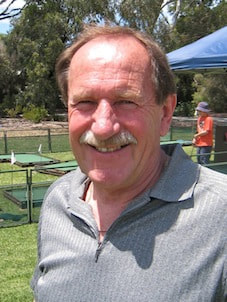
Alex Staritski – Principal 1988 - 1997
It was not until I left at the end of the 1997 school year that I found out that the Ardtornish motto translated into, "To Conquer or Die".
At the time, the irony of the motto on the Ardtornish crest did not have the impact that in reality it should have, nor indeed did it consciously influence my actions during my ten years at the school. However, what I realise now is that the school was always under threat - it was surrounded by well established schools within close proximity and in reality, it was built to last a relatively short period of time.
To survive, we could not rely on its "smallness" but rather had to have excellent and diverse learning programmes which would appeal to a much wider school community.
The transformation of the school was not easy nor did it just happen. Changes introduced, heavily focussed on raising the school's profile and its reputation by ensuring that the school's grounds, facilities and resources were outstanding and its total learning programme was diverse, rich and pursued a goal of quality as well as enhancing the potential of each member of the school community. New initiatives which required new structures and the way that learning was delivered were introduced
to provide support, extension and enrichment programmes.
In addition, existing programmes were given a new lease of life and considerable emphasis was placed on students' behaviour and the school Dress Code. Active school promotion through the annual EXPO, external awards, etc. became part of the overall strategy to lift the image of the school. The rewards that followed were considerable. Science and Technology, and Environmental Education both won National Awards, with the latter also winning many other awards. The Information Technology and Music programmes were recognised as exceptional while the two "drill" teams continued to bring very positive views about the school.
In the Basic Skills Tests the results in Numeracy and Literacy increased and the Year 7 Graduation Ceremony ensured that students wanted to complete their primary education at Ardtornish. Enrolments increased from 350 to over 600 forcing the introduction of a Zone of Right. It was THE school in which to be enrolled in the district and the students were visibly proud of that fact.
As mentioned before, achieving the positive gains was not easy but in the end, the new climate forged because people believed in each other and trusted each to do what was best for the children at the school. It was a great team effort, a team which comprised a committed, enthusiastic and very professional staff and one which was greatly encouraged, supported and assisted by the parents.
I am very proud to have been a member of that team at a time when so much was achieved and I am very pleased to have made so many dear friends. Ardtornish has conquered and will continue to live on as long as the spirit of the '90's is nurtured.
The Future.
Ardtornish Primary School with its colourful and proud history has been a shining light in South Australian education for over 153 years. Who knows what is in store for it in the future? One thing is certain. The current stakeholders - the students, staff and parent community are united in their commitment to maintain its excellence for the next 150 years and beyond.
It was not until I left at the end of the 1997 school year that I found out that the Ardtornish motto translated into, "To Conquer or Die".
At the time, the irony of the motto on the Ardtornish crest did not have the impact that in reality it should have, nor indeed did it consciously influence my actions during my ten years at the school. However, what I realise now is that the school was always under threat - it was surrounded by well established schools within close proximity and in reality, it was built to last a relatively short period of time.
To survive, we could not rely on its "smallness" but rather had to have excellent and diverse learning programmes which would appeal to a much wider school community.
The transformation of the school was not easy nor did it just happen. Changes introduced, heavily focussed on raising the school's profile and its reputation by ensuring that the school's grounds, facilities and resources were outstanding and its total learning programme was diverse, rich and pursued a goal of quality as well as enhancing the potential of each member of the school community. New initiatives which required new structures and the way that learning was delivered were introduced
to provide support, extension and enrichment programmes.
In addition, existing programmes were given a new lease of life and considerable emphasis was placed on students' behaviour and the school Dress Code. Active school promotion through the annual EXPO, external awards, etc. became part of the overall strategy to lift the image of the school. The rewards that followed were considerable. Science and Technology, and Environmental Education both won National Awards, with the latter also winning many other awards. The Information Technology and Music programmes were recognised as exceptional while the two "drill" teams continued to bring very positive views about the school.
In the Basic Skills Tests the results in Numeracy and Literacy increased and the Year 7 Graduation Ceremony ensured that students wanted to complete their primary education at Ardtornish. Enrolments increased from 350 to over 600 forcing the introduction of a Zone of Right. It was THE school in which to be enrolled in the district and the students were visibly proud of that fact.
As mentioned before, achieving the positive gains was not easy but in the end, the new climate forged because people believed in each other and trusted each to do what was best for the children at the school. It was a great team effort, a team which comprised a committed, enthusiastic and very professional staff and one which was greatly encouraged, supported and assisted by the parents.
I am very proud to have been a member of that team at a time when so much was achieved and I am very pleased to have made so many dear friends. Ardtornish has conquered and will continue to live on as long as the spirit of the '90's is nurtured.
The Future.
Ardtornish Primary School with its colourful and proud history has been a shining light in South Australian education for over 153 years. Who knows what is in store for it in the future? One thing is certain. The current stakeholders - the students, staff and parent community are united in their commitment to maintain its excellence for the next 150 years and beyond.
20th Anniversary Staff List 2000
Ms Glyn O'Brien (Principal) Mr Merv Stals (Deputy) Mrs Jan Fitzgerald (Environ. Ed.) Mr Sam Katsivas (Computing) Ms Dora luliano ( Literacy) Mrs Di Mason (Drama) Mrs Marg Duddy (Resource Centre) Ms Nikki Veal (Japanese) Mr Rino Tranfa (7) Mrs Chris Seaman (7) Mr Darryl Carter (6/7) Ms Grace Murphy (6) Ms Alison Heath (6/7) Mr Greg Radloff (6) Ms Sylvia Markis (5) Mr Colin Telfer (5) Mrs Helen James (4/5) Mr Bob Hindmarsh (4) Mrs Joy Emms (3/4) Mrs Tina Antenucci (3) Mr Mat Wilton (3) Ms Helen McCallum (2/3) Ms Jacquie Radan (2) Mrs KayFarrant(1/2) Ms Heidi Newmann (1) Mrs Maria Taylor (R-2) Ms Linda Cox (R/1) Ms Robyn Watson (R/1) Mrs Barbara McBrearty (Rec) Mrs Cecilia Borda (Rec) Ms Anna Mycko (Rec) Ms Lila D'Antuoni ( Rec) Mrs Heather Were (Secretary) Mrs Margaret Robson (Finance) Mrs Sue Pylkkanen (SSO) Mrs Judy Haggett (SSO) Mrs Judy Connor (Library SSO) Mrs June Lunn (SSO) Mrs Gill Olliver (SSO) Mrs Judy Mason (SSO) Mrs Cathie Ettridge (SSO) Mrs Jill Woolley (Pottery) Mrs Glenys Pawlowski (OSHC) Mr Mark Evans (I.T. Tech) Mrs Gaye McKee (Canteen) Mr Graham Carpenter (Maintenance) Mr Des Richards (Maintenance) Mr Paul Day (Groundsman)
Ms Glyn O'Brien (Principal) Mr Merv Stals (Deputy) Mrs Jan Fitzgerald (Environ. Ed.) Mr Sam Katsivas (Computing) Ms Dora luliano ( Literacy) Mrs Di Mason (Drama) Mrs Marg Duddy (Resource Centre) Ms Nikki Veal (Japanese) Mr Rino Tranfa (7) Mrs Chris Seaman (7) Mr Darryl Carter (6/7) Ms Grace Murphy (6) Ms Alison Heath (6/7) Mr Greg Radloff (6) Ms Sylvia Markis (5) Mr Colin Telfer (5) Mrs Helen James (4/5) Mr Bob Hindmarsh (4) Mrs Joy Emms (3/4) Mrs Tina Antenucci (3) Mr Mat Wilton (3) Ms Helen McCallum (2/3) Ms Jacquie Radan (2) Mrs KayFarrant(1/2) Ms Heidi Newmann (1) Mrs Maria Taylor (R-2) Ms Linda Cox (R/1) Ms Robyn Watson (R/1) Mrs Barbara McBrearty (Rec) Mrs Cecilia Borda (Rec) Ms Anna Mycko (Rec) Ms Lila D'Antuoni ( Rec) Mrs Heather Were (Secretary) Mrs Margaret Robson (Finance) Mrs Sue Pylkkanen (SSO) Mrs Judy Haggett (SSO) Mrs Judy Connor (Library SSO) Mrs June Lunn (SSO) Mrs Gill Olliver (SSO) Mrs Judy Mason (SSO) Mrs Cathie Ettridge (SSO) Mrs Jill Woolley (Pottery) Mrs Glenys Pawlowski (OSHC) Mr Mark Evans (I.T. Tech) Mrs Gaye McKee (Canteen) Mr Graham Carpenter (Maintenance) Mr Des Richards (Maintenance) Mr Paul Day (Groundsman)
SRC 2000
The SRC convened by Mrs. Tina Antenucci meets every Tuesday afternoon as a group and also has a voice on the school management committee.
Ashwini Balnaves - Reception David Mates - Reception Sam Williams - Reception Alicia Denham - Year 1 Alexander King - Year 1 Samuel Primiero - Year 1 Lana Robertson - Year 1 Anna Rose - Year 1 Alexandra Bottrell - Year 2 Emma Bulling - Year 2 Tory Ettridge - Year 2 Tyson Lee - Year 2 Joshua Oates - Year 2 Joshua Alien - Year 3 Talia Carter - Year 3 Brett Carr - Year 3 Soraya Goels - Year 3 Sarah Holden - Year 3 Aslin Styles - Year 3 Aaron Bobridge - Year 4 Joshua Bollmeyer - Year 4 Marianna Datsenko - Year 4 Ashleigh Denham - Year 4 Tilly Duncan - Year 4 Simone Goels - Year 4 James Harding - Year 4 Adrian Marr - Year 4 Jessica Logan - Year 5 Ryan Packer - Year 5 Rhiess Styles - Year 5 Vanessa Baldassarre - Year 6 Andrew Brown - Year 6 Latara Friend - Year 6 lan Grunert - Year 6 Chris Robinson - Year 6 Carlie Steart - Year 6 Lena Weidtler - Year 6 Katie Bettison - Year 7 Katherine Erdmann - Year 7 Devon Forbes - Year 7 Anzio Louis - Year 7
The SRC convened by Mrs. Tina Antenucci meets every Tuesday afternoon as a group and also has a voice on the school management committee.
Ashwini Balnaves - Reception David Mates - Reception Sam Williams - Reception Alicia Denham - Year 1 Alexander King - Year 1 Samuel Primiero - Year 1 Lana Robertson - Year 1 Anna Rose - Year 1 Alexandra Bottrell - Year 2 Emma Bulling - Year 2 Tory Ettridge - Year 2 Tyson Lee - Year 2 Joshua Oates - Year 2 Joshua Alien - Year 3 Talia Carter - Year 3 Brett Carr - Year 3 Soraya Goels - Year 3 Sarah Holden - Year 3 Aslin Styles - Year 3 Aaron Bobridge - Year 4 Joshua Bollmeyer - Year 4 Marianna Datsenko - Year 4 Ashleigh Denham - Year 4 Tilly Duncan - Year 4 Simone Goels - Year 4 James Harding - Year 4 Adrian Marr - Year 4 Jessica Logan - Year 5 Ryan Packer - Year 5 Rhiess Styles - Year 5 Vanessa Baldassarre - Year 6 Andrew Brown - Year 6 Latara Friend - Year 6 lan Grunert - Year 6 Chris Robinson - Year 6 Carlie Steart - Year 6 Lena Weidtler - Year 6 Katie Bettison - Year 7 Katherine Erdmann - Year 7 Devon Forbes - Year 7 Anzio Louis - Year 7





